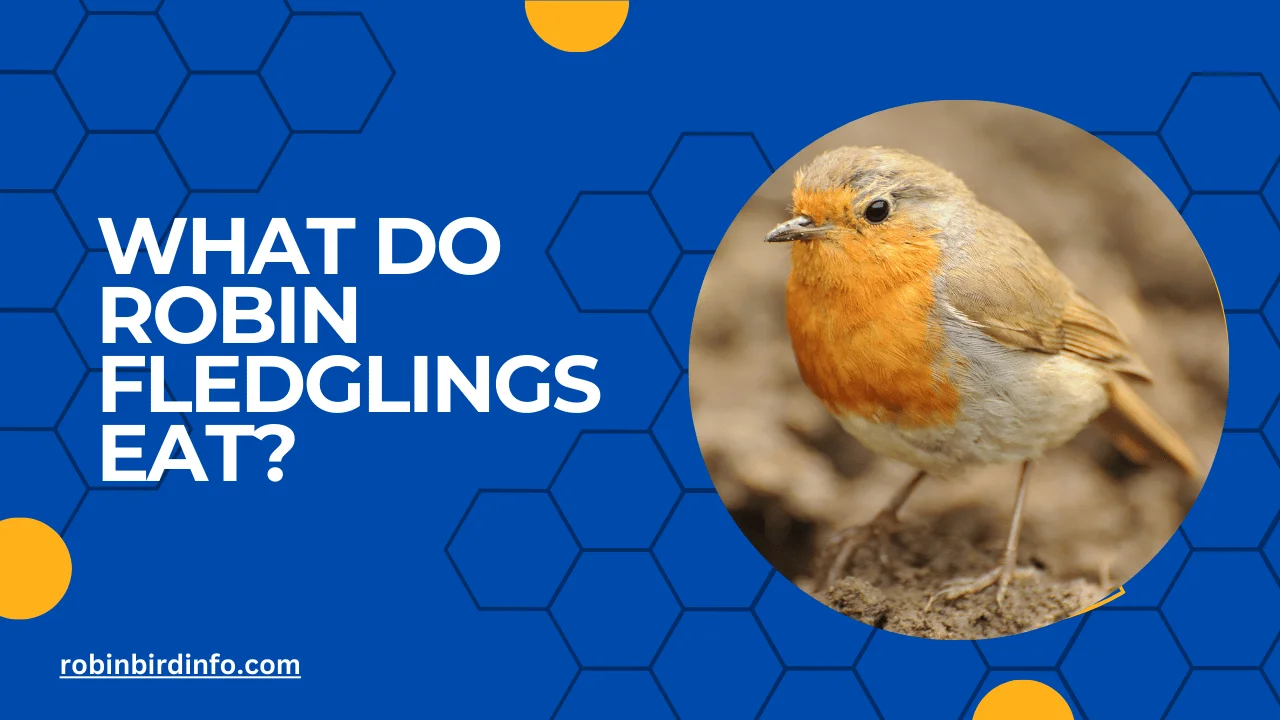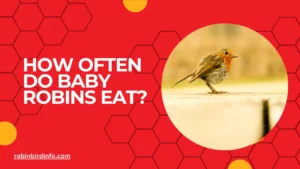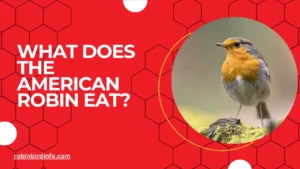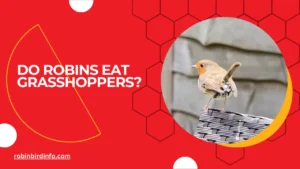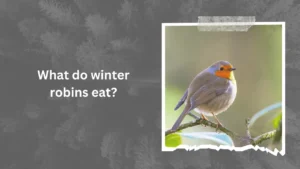Have you ever witnessed a frantic Robin flitting through your yard, a wriggling worm clutched in its beak?
These seemingly gentle songbirds transform into tireless caterers during breeding season, tirelessly feeding their hungry offspring. But what exactly goes into fueling the rapid growth and development of these fledgling Robins? Their dietary needs might surprise you!
Understanding what Robin fledglings eat is not just fascinating trivia for bird enthusiasts. It’s crucial for creating bird-friendly backyards and supporting these delightful creatures. By providing the right kinds of food sources, we can help these vulnerable young birds thrive and navigate the challenges of independent life.
So, grab a cup of coffee, settle in, and get ready to delve into the fascinating world of fledgling Robin nutrition! This blog post will explore the specific dietary needs of Robin chicks, the role of parents in providing sustenance, and how we can contribute to their success in the wild.
Contents
- 1 Section 1: The Nutritional Needs of Fledgling Robins
- 2 Section 2: The Role of Parental Care
- 3 Section 3: The Transition to Independent Feeding
- 4 Section 4: The Impact of Environmental Factors
- 5 Section 5: Conservation Implications
- 6 FAQ’s
- 6.0.1 How long does it take for a Robin egg to hatch?
- 6.0.2 What do baby Robins eat?
- 6.0.3 How often do parent Robins feed their young?
- 6.0.4 How long do baby Robins stay in the nest?
- 6.0.5 What happens to fledgling Robins after they leave the nest?
- 6.0.6 What are some common threats to fledgling Robins?
Section 1: The Nutritional Needs of Fledgling Robins
Protein is a crucial nutrient for the rapid growth and development of fledgling Robins. They require a high-protein diet to build muscle, feathers, and other tissues.
Energy is also essential for fledgling Robins. They need a constant supply of energy to fuel their growth and activities. Their diet provides the necessary carbohydrates and fats to meet these energy demands.
In addition to protein and energy, fledgling Robins require a variety of essential nutrients, including vitamins and minerals. These nutrients play a vital role in maintaining overall health and supporting various bodily functions.
Section 2: The Role of Parental Care
Adult Robins play a critical role in providing food for their young. They spend a significant amount of time foraging for insects, worms, and berries. Once they have captured prey, they bring it back to the nest and feed their nestlings.
The frequency of feeding varies depending on the age and size of the nestlings. As the nestlings grow, they require more frequent and larger meals.
The type of food that adult Robins bring to their young can vary depending on what is available in the environment. However, insects are a primary food source, especially for young nestlings.
Section 3: The Transition to Independent Feeding
Once nestlings are ready to fledge, they leave the nest and begin to explore their surroundings. Their parents continue to provide food and protection for a short period, but the fledglings gradually become more independent.
Learning to forage is a crucial skill for fledgling Robins. They observe their parents and learn to identify potential food sources, such as insects and berries. They also learn to use their beaks to capture and consume prey.
As fledgling Robins gain experience, they develop their foraging skills and become more efficient at finding food. They may learn to search for insects on the ground, in trees, or in the air.
Section 4: The Impact of Environmental Factors
Weather conditions can significantly impact the availability of food for fledgling Robins. Adverse weather, such as heavy rain or cold temperatures, can reduce insect activity and make it difficult for Robins to find food.
Habitat quality is also important for the survival of fledgling Robins. The availability of suitable nesting sites, food sources, and shelter can influence their growth and development.
Predation is a major threat to fledgling Robins. A variety of predators, including cats, birds of prey, and snakes, can prey on young Robins.
Section 5: Conservation Implications
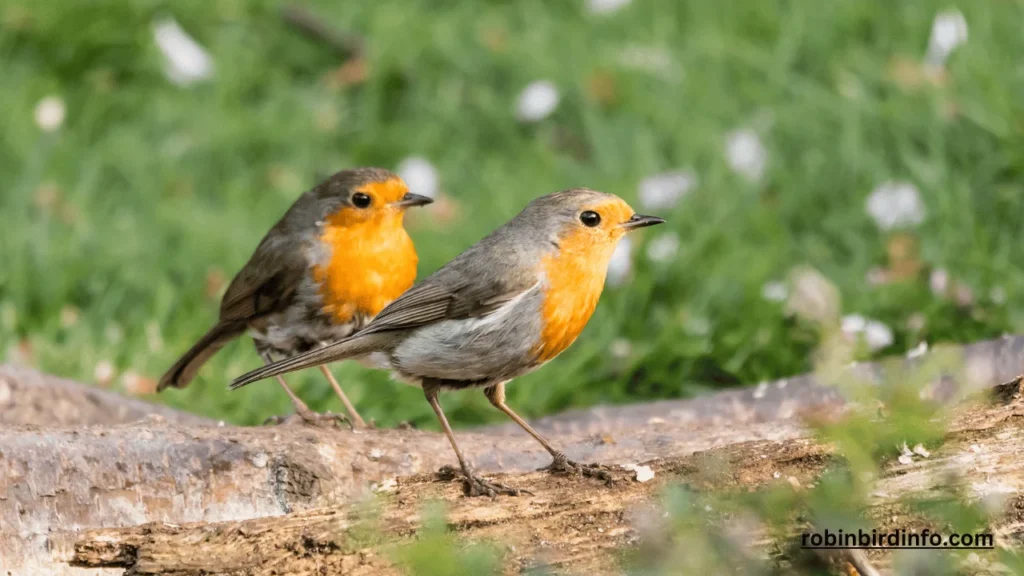
Habitat loss and fragmentation can reduce the availability of suitable nesting and foraging sites for Robins. As human development encroaches on natural habitats, it becomes increasingly important to protect remaining natural areas.
Pesticide use can have a negative impact on insect populations, which are a vital food source for fledgling Robins. By reducing pesticide use, we can help to protect bird populations and promote biodiversity.
Conservation strategies such as creating bird-friendly habitats, reducing pesticide use, and participating in citizen science projects can help to ensure the survival of Robin populations. By taking steps to protect their habitat and food sources, we can help these beautiful birds thrive.
Conclusion
The dietary needs of fledgling Robins are essential for their growth and development. By understanding their dietary requirements and the challenges they face, we can take steps to protect these birds and their habitats. By creating bird-friendly environments and reducing the use of harmful pesticides, we can help ensure the survival of future generations of Robins.
FAQ’s
How long does it take for a Robin egg to hatch?
It typically takes around 12-14 days for a Robin egg to hatch.
What do baby Robins eat?
Baby Robins are primarily fed insects, such as caterpillars, beetles, and worms. Their parents may also bring them berries and other soft fruits.
How often do parent Robins feed their young?
Parent Robins feed their young frequently, especially when they are very young. The frequency of feeding decreases as the nestlings grow older.
How long do baby Robins stay in the nest?
Baby Robins typically stay in the nest for about 13-15 days before fledging.
What happens to fledgling Robins after they leave the nest?
After fledging, young Robins continue to be fed and protected by their parents for a short period. They gradually become more independent and start to forage for their own food.
What are some common threats to fledgling Robins?
Fledgling Robins face various threats, including predation by cats, birds of prey, and snakes. Adverse weather conditions, such as heavy rain and extreme cold, can also impact their survival.

